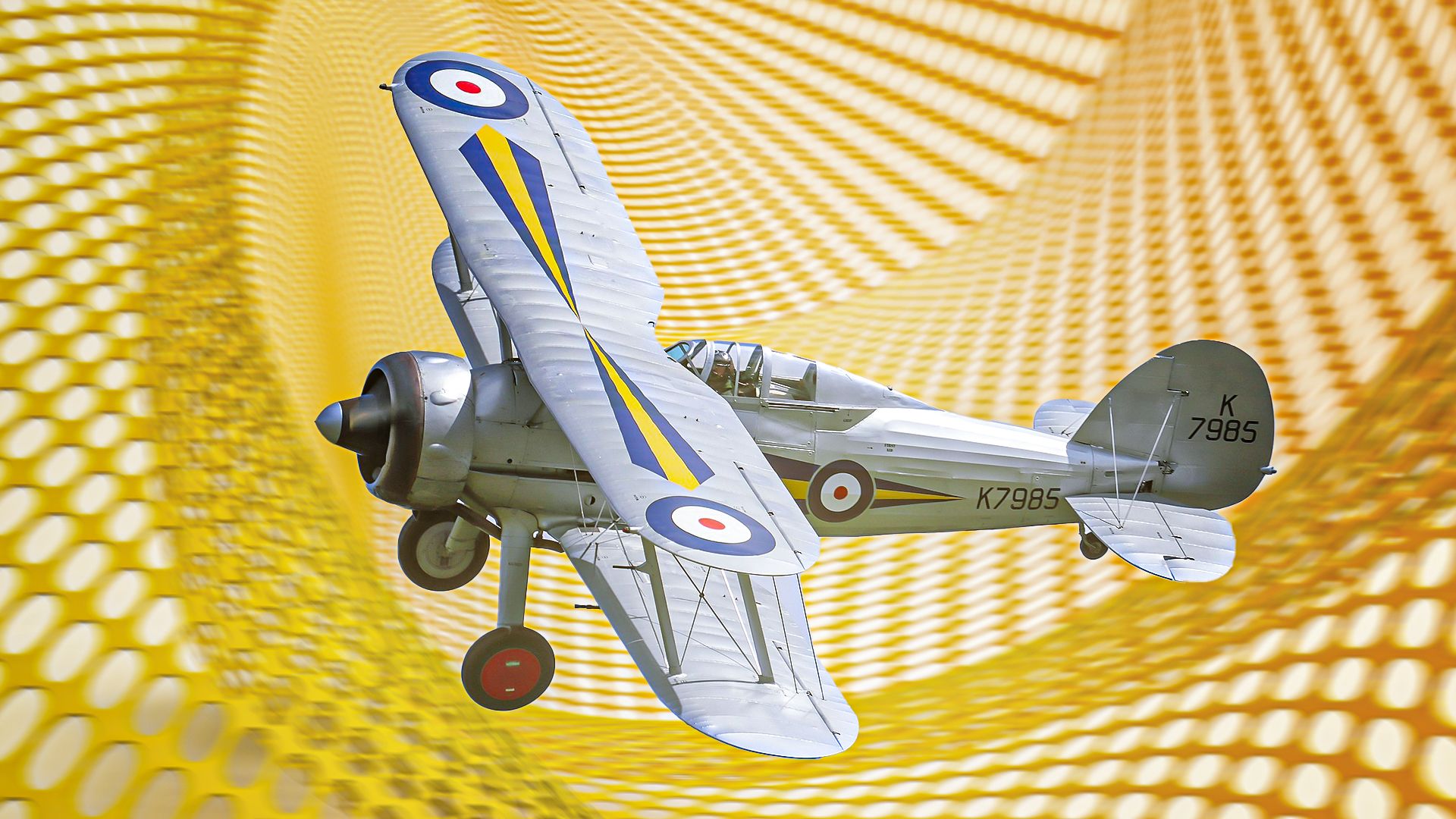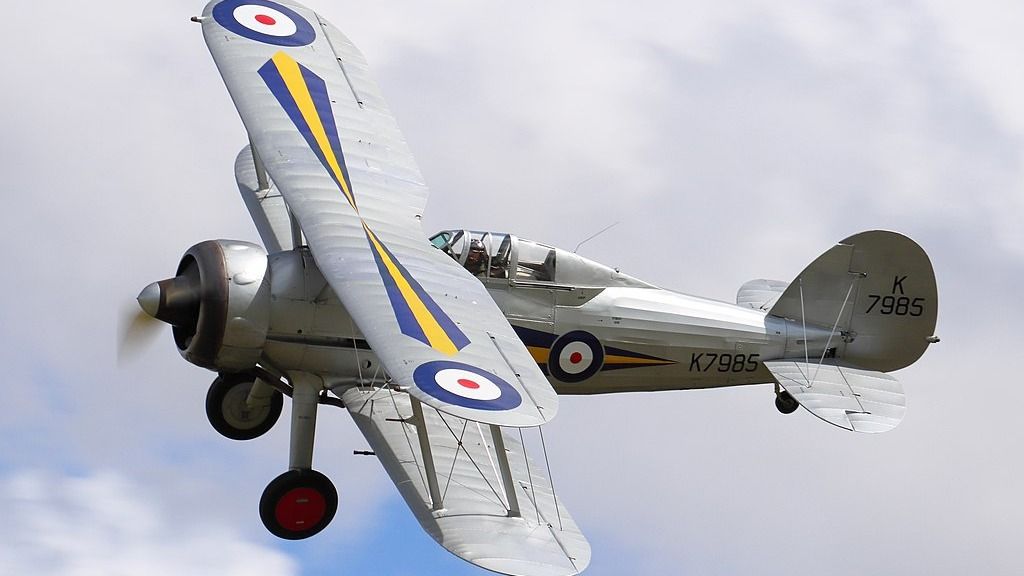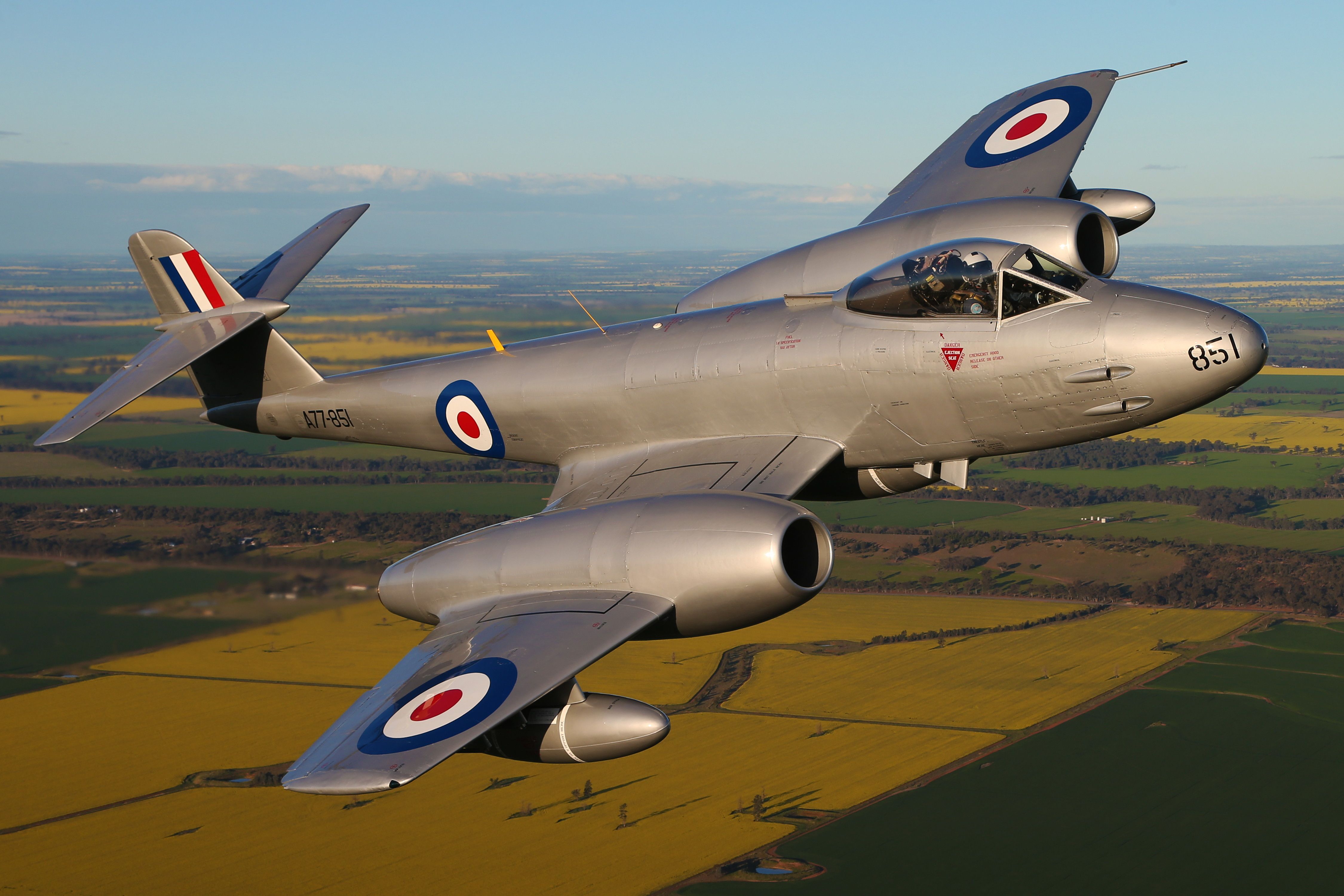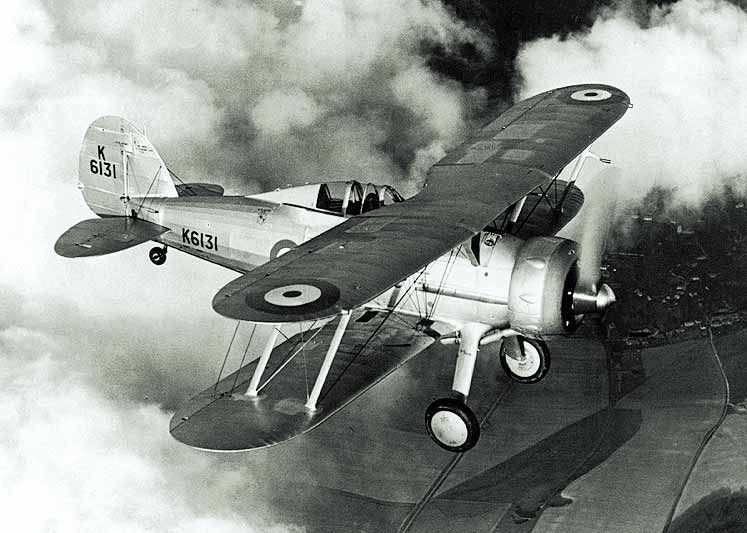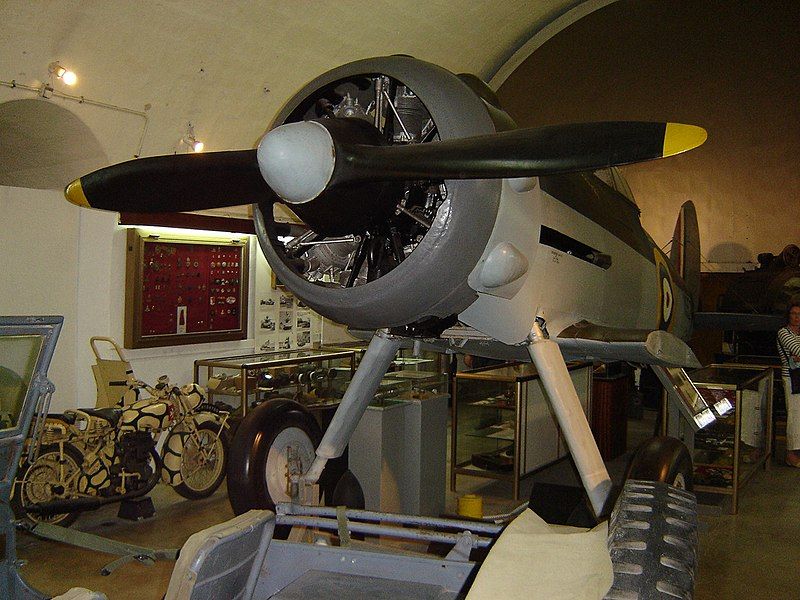Summary
- Gloster Gladiator was the RAF’s last biplane fighter and first enclosed cockpit fighter.
- Noteworthy aces like Pat Pattle achieved significant air-to-air victories in the Gladiator.
- The Gladiator faced tough competition but held its ground, with ten surviving airframes today.
“Joey, do you like movies about gladiators?”
Sorry, folks, that was too easy! Given that this is an article about an airplane bearing the name “Gladiator,” you know I just had to cite one of the most memorable lines from the most popular aviation-related comedy film of all-time, the Zucker Brothers’ 1980 classic “Airplane!“co-starring the late great Peter Graves and Leslie Nielsen (both gone but not forgotten) amongst other members of an all-star cast. I suppose we could just as easily segue from there to Russell Crowe’s “Are you not entertained?” line from 2000’s “Gladiator.”
On a serious note, several decades before either one of those movies were made, there was a real-life airplane with the “Gladiator” moniker. We’re talking specifically about the Gloster Gladiator, and she made aviation history as both (1) the Royal Air Force’s (RAF) last biplane fighter and (2) the RAF’s first enclosed cockpit fighter plane. Time now to give her her moment in the Simple Flying sun.
Gloster Gladiator early history and specifications (and some company history too)
The Gloster Gladiator made her maiden flight on September 12, 1934, and was officially introduced into operational service with the RAF on February 23, 1937. Designed by Henry Philip Folland OBE (1889-1954), she was manufactured by the now defunct Gloster Aircraft Company Ltd. of Cheltenham, England, with a grand total of 747 built. (Something oddly poetic about that number, eh?), One of the great ironies about Gloster is that in addition to building the RAF’s *last* biplane fighter, the company also built the RAF’s *first* jet fighter, the Gloster Meteor. Which just goes to show how versatile Gloster’s R&D blokes truly were.
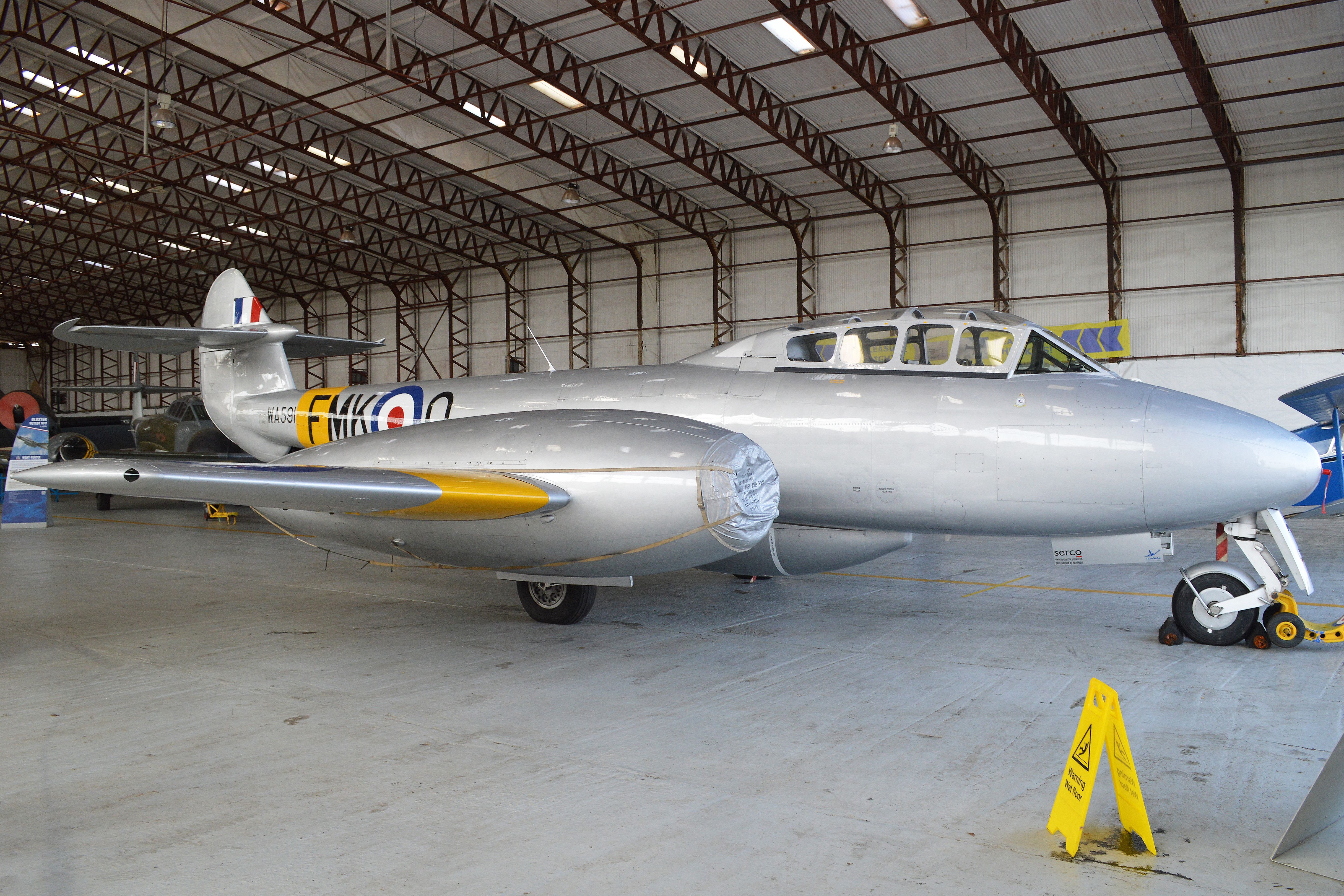
Related
First British Jet Fighter: 5 Fun Facts About The Gloster Meteor
Eighty-two years after its first flight, the aircraft is still used as a testbed.
Gloster merged with Armstrong Whitworth and Avro in the early 1960s, which was in turn succeeded by Hawker Siddeley Aviation, which is now BAE Systems.
In other words, in the span of a decade, Gloster went from this:
…to this:
Photo: Royal Australian Air Force
Specifications of the Gladiator included:
|
Fuselage length |
27 ft 5 in (8.36 m) |
|
Wingspan |
32 ft 3 in (9.83 m) |
|
Height |
11 ft 9 in (3.58 m) |
|
Empty weight |
3,217 lb (1,459 kg) |
|
Gross weight |
4,594 lb (2,084 kg) |
|
Powerplant |
One Brisstol Mercury IX 9-cylinder air-cooled radial piston engine, 830 hp (620 kW) |
|
Max airspeed |
253 mph (407 km/h; 220 kn) at 14,500 ft (4,420 m) |
|
Cruising speed |
210 mph (340 km/h; 180 kn) |
|
Endurance |
2 hours |
|
Service ceiling |
32,800 ft (10,000 m) |
How well-armed was she, and how well did she fight?
As to the first part of the question, this warbird was initially armed two synchronized .303 caliber (7.7 mm) Vickers machine guns in the fuselage sides, along with two .303 caliber Lewis machine guns; one beneath each lower wing; later versions packed a total four Browning Mark II .303 machine guns, divvied into the same locations at the Vickers-Lewis gun combo-wielding variants.
As to the second part of the question…even though this warbird and her fellow biplanes were rendered mostly obsolescent by the onset of the Second World War, the Gladiator still fought surprisingly well. Not just in the hands of RAF and Royal Navy Fleet Air Arm pilots, mind you, but those of the following air forces:
- Royal Australian Air Force (RAAF)
- South African Air Force
- Royal Hellenic Air Force (Ellinikí Vasilikí Aeroporía)
- Chinese Nationalist Air Force
- Finnish Air Force (Ilmavoimat)
The “top dog” amongst Gladiator aces was Marmaduke Thomas St John “Pat” Pattle (yes, bad pun intended between “top dog” and “Marmaduke”), a South African-born Englishman serving in the RAF after the South African Air Force ironically rejected him. Pat was a triple ace in the Gladiator with 15 confirmed air-to-air kills, four probables, and six more enemy planes damaged. As noted by the narrator of the second YouTube video embedded within this article:
“Most of these early victories in the Gladiator would be against aircraft of the Regia Aeronautica of Fascist Italy including CR 32s and 42s, SM79s and other similar aircraft that the Gladiator had a competitive edge with despite its old design.”
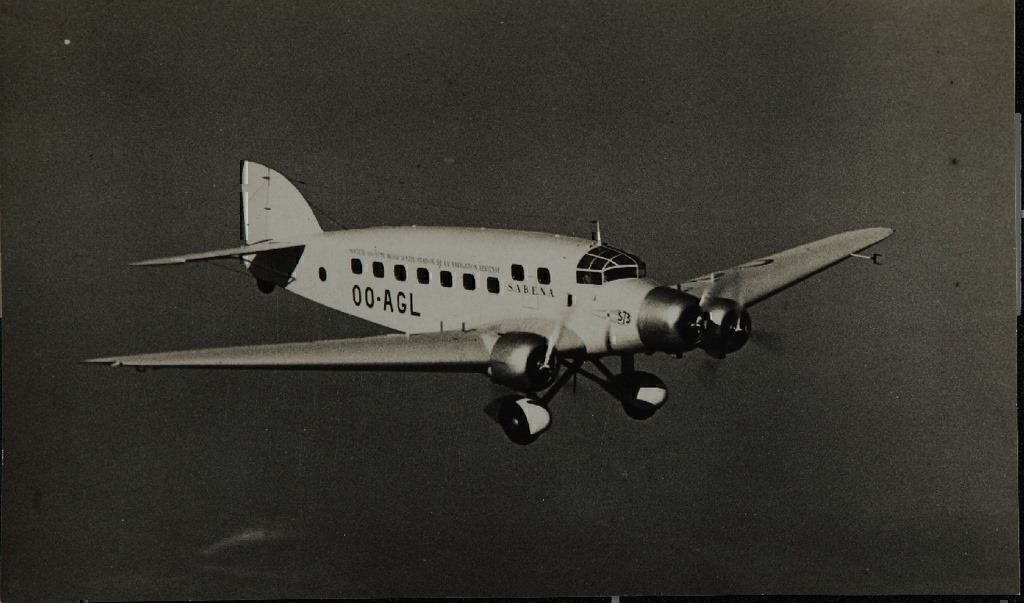
Related
Here’s How This Italian Airliner Shaped World War II
From there, the narrator notes that the Finnish Air Force ravaged the Soviet Air Force during the Winter War of 1939-1940 and the Continuation War of 1941-1944. But as noted by both the narrator of that video and the official Royal Air Force Museum info page, it was during the defense of Malta where the Gladiator — specifically the Fleet Air Arm Sea Gladiator variant — had her greatest successes, all the more remarkable when you consider that there were six such warbirds serviceable at any one time to intercept the ravaging Italians bombers.
Three of those six were immortalized by name, as military historian A.B.C. Whipple elaborates in one of the photo captions of his 1981 book “The Mediterranean” (part of Time-Life Books’ excellent World War II series):
“The skeleton of a Gladiator fighter plane named Faith is saluted in ceremonies awarding it to the Maltese as a historic relic. At one point in the grim early months of the Mediterranean war, Faith and two other planes, dubbed Hope and Charity, defended the island against an Italian Air Force of 200 aircraft, shooting down at least 30 of them.”
Other noteworthy Gladiator aces included (but were certainly not limited to):
- Captain Paavo Berg, Finnish Air Force, 6 kills
- Capt John “Buffalo” Huang Xinrui, a Chinese-American aviator who volunteered to serve in the Chinese Air Force, became the first Gladiator flying ace and *the* first American fighter ace of the war
- Pilot Officer William “Cherry” Vale, RAF, with ten individual kills, one shared kill, and 1.5 damaged
The last Gladiator pilot to score an aerial victory was a Finn. 1st Lt Håkan Strömberg, who did so on February 15, 1943, against a Soviet Polikarpov R-5.
But what about the Battle of Britain?
Perhaps the biggest sign of the time that the era of the biplane warbird had sung its swan song (another bad pun intended), the RAFs “Finest Hour” (in the immortal words of Winston Churchill) turned out to be (paraphrasing Shakespeare now) “much ado about very little” for Gladiator drivers. As per the aforementioned RAF Museum info page:
“Only two home based units used the Gladiator operationally during the Battle of Britain; No.247 Squadron at RAF Exeter and RAF Roborough and No.804 Squadron, Fleet Air Arm at stations in Scotland.”
Digging a little further, we learn that the most noteworthy “action” (if you can even call it that) experienced by Gladiator pilots during their country’s most epic of air battles was when Gladiators intercepted a Luftwaffe Heinkel He 111 medium bomber in late October 1940…without result.
Best biplane fighter ever made?
Needless to say, that’s a question that begs highly subjective interpretation. The Gladiator didn’t rack up the 1,294 kill tally that the First World War’s legendary Sopwith Camel did…but then again, in fairness, the Gladiator was going up against much tougher competition than the Camel, namely the monoplanes that were becoming the wave of the future and would soon render the Gladiator and her biplane brethren obsolescent (especially Imperial Japan’s vaunted Mitsubishi A6M “Zero” fighter).
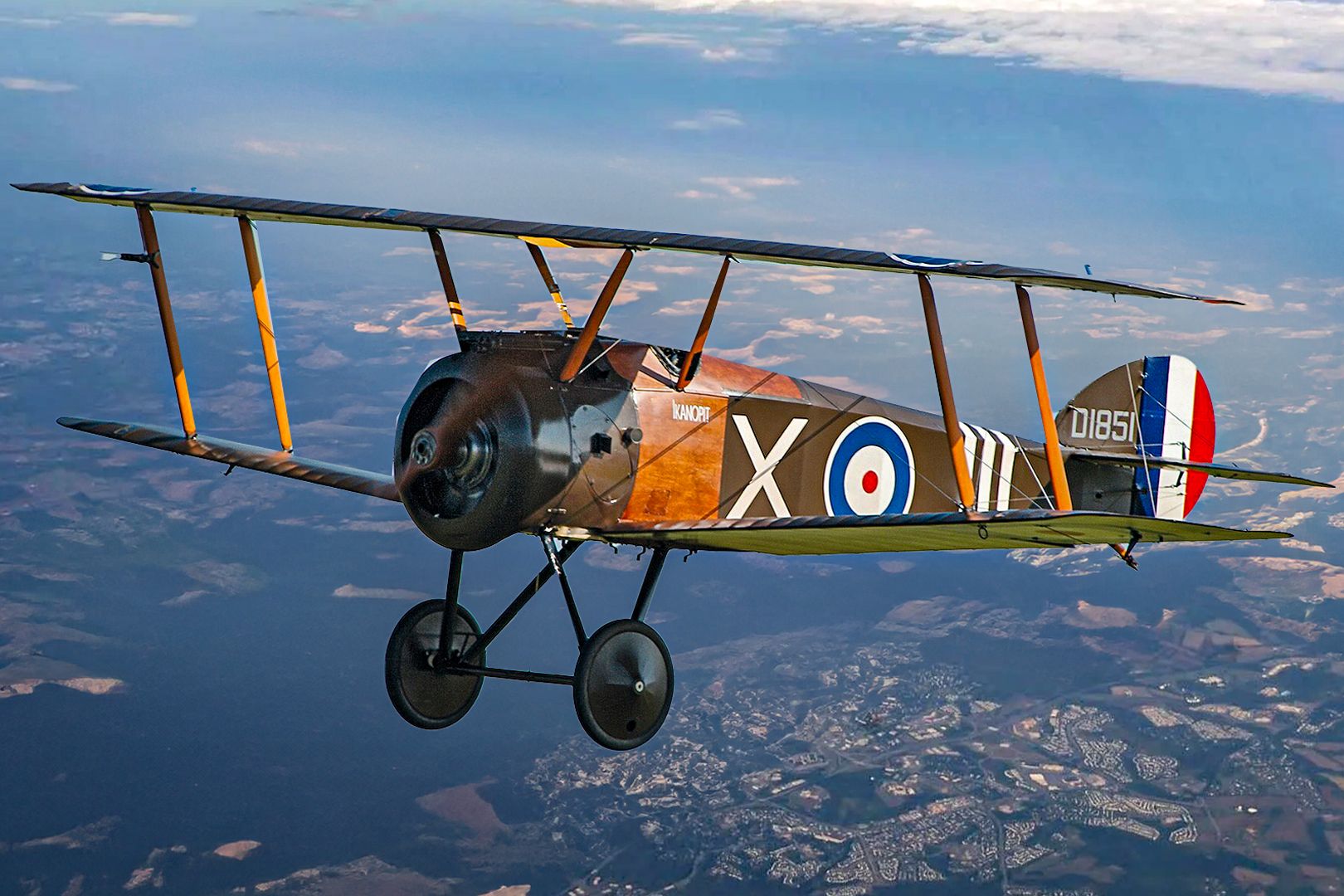
Related
Snoopy’s Dream Plane: Why The Sopwith Camel Is Britain’s Most Famous Fighter Of WWI
The Sopwith Camel is Britain’s most iconic WWI fighter. Partially for its real-world achievements, and partially thanks to a beloved cartoon dog.
The fact that the Gladiator held out as long as she did against such stiff competition is truly remarkable. Also, the fact that the aforementioned Pat Pattle was *the* highest-scoring biplane ace of WWII certainly provides a strong argument for the Gladiator’s “best biplane fighter” claim. Moreover, I can think of no other biplane fighter that garnered as many kills and as many aces (at least nine of the latter) as the glamorous, glorious Gladiator (like that alliteration).
I was thinking that perhaps some Soviet biplane (due to sheer numbers produced by Stalin’s factories) might’ve contended for the title, but from scouring authoritative sources such as Russell Miller’s 1983 book “The Soviet Air Force at War” (part of Time-Life Books’ Epic of Flight series), I can find no such indicators.
If any of our dear readers out there do know of any WWII biplanes with a higher collective score than the Gladiator, please let us know in the Comments section! Thanks in advance!
Where Are They Now?
Not surprisingly, the Gladiator would soon be replaced by Britain’s two legendary monoplane fighters, the Supermarine Spitfire and the Hawker Hurricane. Yet amazingly, one country, namely Portugal, kept the obsolescent Gladiator in service all the way until 1953, i.e., well into the Jet Age!
Out of the 747 Gladiator airframes built, ten survive today: one apiece in Malta, Norway, and Sweden, with the remainder in the United Kingdom. Remarkably enough, two of those British specimens are airworthy, namely:
- Registration No. L8032, a Mark I Gladiator at the Shuttleworth Collection in Old Warden, Bedfordshire
- Registration No. N5903, a Mk. II Gladiator at The Fighter Collection in Duxford, Cambridgeshire.

